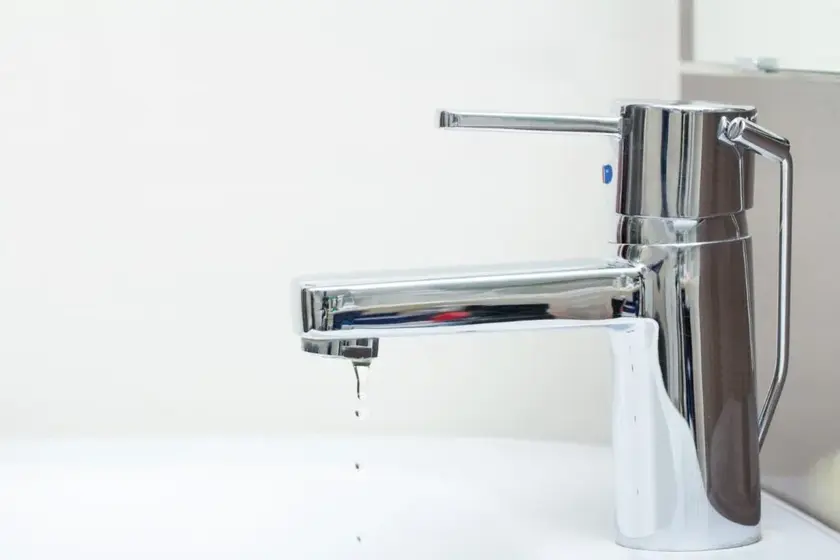Dealing with a leaky faucet can be frustrating, wasteful, and costly. If you are wondering how to fix leaky faucet, then you’ve come to the right place. You would be happy to know that it is a relatively simple task that you can likely handle on your own.
In this guide, we walk you through the common causes of a leaky faucet, and the tools that you’ll need to do the job. It also covers the step-by-step process to fix the leak, and when it might be time to seek professional help.
Table of Contents
Why is my faucet leaking?
There are several common causes that can lead to the annoyance of dripping water. Understanding these causes will help you identify the root of the problem and take appropriate action.
Here are some of the most frequent causes of a leaky faucet:
-
- Damaged or deteriorated parts.
- High water pressure.
- Improper installation of your faucet.
How to fix leaky faucet by yourself?
You don’t need professional plumbing experience to tackle a leaky faucet. With some basic tools and a bit of guidance, you can easily resolve many common faucet issues. It’s a straightforward task that not only saves water but also spares you from unnecessary repair costs.
That said, if you’re uncomfortable with DIY repairs or encounter a complex problem, it’s best to seek professional help.
With Select, your home warranty can cover your faucet repairs and even replacement! Find out what else a home warranty covers.
How long does it take to fix a leaky faucet?
The time required to fix a leaky bathroom or kitchen faucet depends on various factors, such as the type of faucet, the extent of the problem, and your familiarity with the repair process.
Even so, a basic fix can often be completed in two hours.
What tools do I need to fix a leaky faucet?
To successfully fix leaky faucet, it’s essential to have the right tools at your disposal.
Here is a list of tools you may need to tackle the repair:
-
- Adjustable, Plumbers & Allen Wrench
- Screwdrivers
- Needle Nose Pliers
- Bucket
- Towels
- Replacement Parts
- Plumbers Tape
- Lubricant
- Cleaning Supplies
Quick and Easy Steps to Fix Leaky Faucet
Shut off the water supply.
Before beginning any repairs on how to fix leaky faucet, it’s crucial to turn off the water supply and turn off the faucet itself. This step will prevent any accidental water leaks and allow you to work on the faucet without interruptions.
Make sure to have both your bucket and towels handy in case of any remaining water that may come out from the pipes before you move on to the next step.
Disassemble the faucet.
Using the appropriate screwdriver, remove the screws that hold the faucet handle in place. If there is a decorative cap covering the screws, gently pry it off with a flathead screwdriver. Once the handle is removed, you may need to use an Allen wrench to unscrew the collar or any additional components.
Make sure to refer to the manufacturer’s instructions during disassembly. The method and tools necessary for removal vary depending on the type of faucet you have.
If you don’t have the manual, you can always check the manufacturer’s website. Many have these materials available for download, though you may have to search a bit.
Inspect and replace the damaged or deteriorated parts.
Once the handle is removed, inspect the parts inside the faucet to determine which component is the cause of the leak.
-
- If you notice any cracks or wear on your O-rings or rubber washers, replace them with new ones of the same size and shape.
- If your faucet cartridge is damaged and needs to be replaced, you can easily purchase one at a home improvement store and follow the manufacturer’s instructions for installation.
Clean and lubricate the faucet components.
This step is important when learning how to fix leaky faucet. Before reassembling the faucet, clean any mineral deposits, rust, or debris from the components using vinegar or a mild cleaning solution.
Rinse the parts thoroughly and dry them with a clean cloth. Apply a small amount of lubricant to the O-rings and other moving parts to ensure smooth operation and a proper seal.
Reassemble the faucet.
Carefully reinstall the faucet parts in the order in which you removed them. Tighten all screws and connections securely but avoid overtightening, as it may cause damage. Use the adjustable wrench or plumber’s wrench as needed to tighten any fittings or connections.
Test for leaks.
Once you’ve reassembled the faucet, it’s time to test it for leaks.
Slowly turn on the water supply and watch the faucet closely. Look for signs of leakage around the handle, spout, or base.
If everything appears to be in order, congratulations! You have successfully fixed your leaky faucet. If you notice any leaks, double-check the connections, and ensure everything is tightened correctly.
If your faucet is dripping after rechecking all your work, it may be time to seek help from a professional.
When should you get professional help for a leaky faucet?
While fixing a leaky faucet is a manageable task for most homeowners, certain situations may require professional assistance.
Consider seeking help if:
-
- You’re unable to identify the type of faucet or determine the cause of the leak.
- The problem persists even after following the repair steps outlined in this guide.
- The faucet is old, severely damaged, or in clear need of replacement.
- You’re uncomfortable with DIY repairs or lack the necessary tools and expertise.
Will a home warranty cover a leaky faucet?
At Select Home Warranty, we understand that some home repairs can be challenging or time-consuming. That’s why we offer home warranty coverage for plumbing systems and leaks to protect you from unexpected expenses.
Our network of skilled professionals is available to assist you with a wide range of home repairs, including leaky faucets. If you’re unsure how to fix leaky faucet yourself, our experts are here to help.
If you already have coverage, submit your claim today.
Don’t have a home warranty? Getting a quote is quick, easy, and totally free. Click on the link below or call us at 800-670-8931.
Looking for other easy home repair DIYs? Check out other common home repairs you can do yourself.

